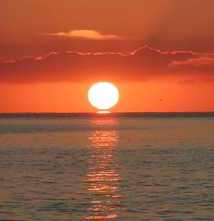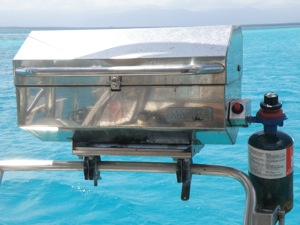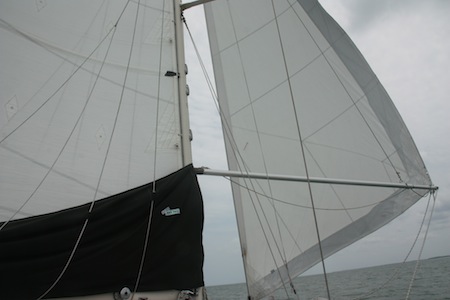A continuation of “Is Commuter Cruising Right For You?“, this post, Baby Steps, addresses our learning curve after we finally bought a boat. And what a learning curve it was! David had been sailing his entire life, but racing 18′ inland lake scows and cruising are two very different skill sets! Luckily he was a Quartermaster First Class in his US Coast Guard days, so he was intricately familiar with navigation. I, on the other hand, started racing one design Y Flyers in 1994 and had essentially no skills to bring to the partnership! So after the learning curve to figure out if we wanted to go cruising and what boat was right for us, we decided to take it easy, learning as we went.
Then we bought Winterlude.
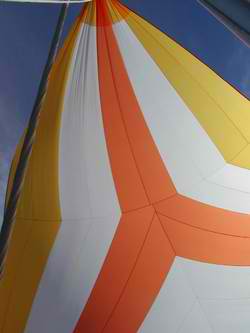
1. First we daysailed on protected waters and only in good weather – the Chesapeake turned out to be the perfect place to learn how to get in and out of a slip, how to anchor in fair weather and every other essential skill that many cruisers take for granted after they’ve been doing them for years. These early months allowed us to get used to the boat with no “extra” challenges. Well, maybe that should be “few” extra challenges. Annapolis and Back Creek are crowded sailing havens. We provided more than one evening’s excitement for the boats across the creek. They were enjoying their sunsetters, talking and laughing as cruisers do when we came back from a daysail. That’s when the entertainment began. It literally took us over an hour to back the boat into the slip. Every time we’d get the approach just right, the wind would catch the bow and we’d motor a tight circle and do it again.
2. While we were daysailing and enjoying Annapolis and the Chesapeake, we also commenced the learning curve on how to take care of Winterlude and all her mysterious equipment. We had to learn all the basics, changing the oil, all about our diesel, what the devil is an impeller anyway? And why does it need changed! In retrospect, we made a major mistake by not being available when the professionals we hired to work on the boat were installing new gear or fixing electrical issues or anything else.
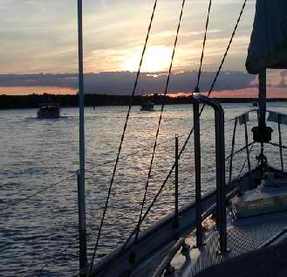
3. We also split up learning tasks. We were each supposed to learn skills that might be valuable aboard. David tried to enroll in a diesel engine course at the local community college but the timing just didn’t work out. We’re still contemplating taking the class offered by Mack Boring in Annapolis, but so far we’ve been too busy cruising whenever the class has been offered. We bought all the books Nigel Calder and Don Casey had every written and devoured the info. These books still provide an excellent reference library aboard … when something happens, usually the first thing we do is reach for a Nigel Calder book and look for the diagram of how something is supposed to look, versus what ours looks like!
4. I tried to learn a language, Spanish, since our first out of the USA cruising was likely going to be the Northwest Caribbean. Keep in mind, I had 4 years of Spanish in high school, 2 years of Spanish in college, I’d tried every technique in the Border’s Bookstore as well as online, and still couldn’t speak the language. Finally I learned enough to converse with a 5 year old and a bit more. At the very least, do yourself a favor and buy one of Kathy Parson’s books … Spanish for Cruisers or French for Cruisers, depending on where you’ll be cruising.
5. Because we wanted to be able to have an SSB and winlink for e-mail, I enrolled in a Red Cross ham radio class and passed my 1st Tech exam for the introductory level of being a ham radio operator. We still use Winlink, although we have Sailmail aboard too, so I guess technically I don’t use the ham license very often, but it was still fun to learn.
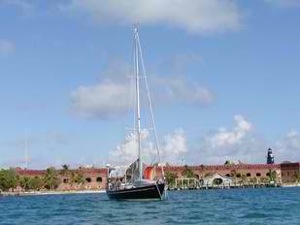
6. We attended various boat shows and a South Seas Cruising Association “gam”. The boat shows and their seminars were OK, but by far the better choice was the SSCA gam in Melbourne Florida. The gam was smaller and the attendees were mostly cruisers with much more experience. We picked their brains on every subject from choosing a first cruising ground to cooking aboard. I took advantage of the Ham license offering to pass my morse code exam (no longer required).
7. Finally we were ready for our first 10 day adventure sailing Winterlude from Annapolis to Burnt Store Marina in Punta Gorda Florida. We couldn’t take a month off work, so we opted to do the trip in stages. First stage was Annapolis to New Bern, North Carolina, then New Bern to Canaveral, Florida, and finally Canaveral to Punta Gorda, FL via the round the Keys route since our mast height precluded trying the Okeechobee Waterway cutting across Florida.
8. For our 1st overnight we took friends along for reinforcement. Turned out ALL of us learned not to venture too far offshore – by the time we were in the gulf stream, it was too late. We learned about square waves and rough seas even though the skies were bright blue and the night was starry.
9. As the months went by, we gained experience even though the boat was in Florida and we were in the Midwest. Our goal was 50 nights aboard annually until we left to go cruising despite our jobs and very active teenagers. We achieved that goal daysailing and weekending aboard in the Charlotte Harbor area – Sanibel Island, Captiva and Gasparilla Island provided great places for us to be pretend cruisers.
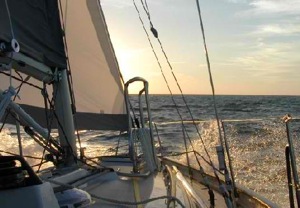
10. The next babystep was an overnight by ourselves to the Dry Tortugas. We learned alot on this trip too — and one of the biggest lessons is that we didn’t want to live without ice. The Dry Tortugas were extremely hot and my gin and tonic (after the anchor was down), even though chilled in the fridge, was lukewarm!
11. Finally, in April 2004, just before we were “scheduled” to leave in October 2004, we spent an entire month living aboard in the Keys, an overnight there and an overnight back, to see how we’d like it, if we could do it and if both of us were still alive after living in 18′ of living space for an entire month.
All was well and it was time to begin planning to actually throw off those dock lines and go somewhere!
How did you prepare to go cruising? Any additional tips for readers? Please leave a comment! THANKS! Jan
